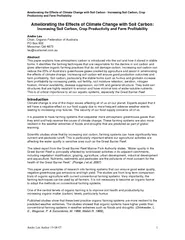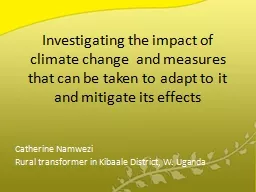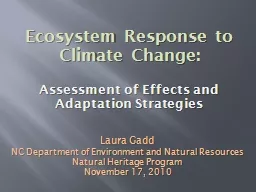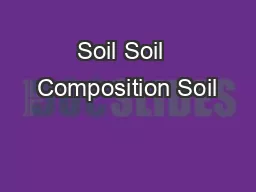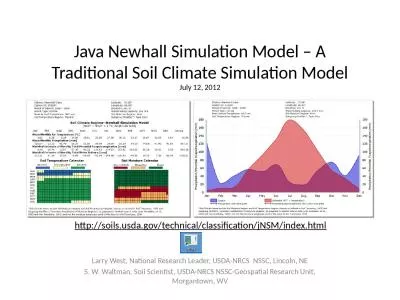PDF-Ameliorating the Effects of Climate Change with Soil C
Author : celsa-spraggs | Published Date : 2015-04-28
comau Abstract This paper explains how atmospheric carbon is intr oduced into the soil and how it stored in stable forms It identifies the farming techniques that
Presentation Embed Code
Download Presentation
Download Presentation The PPT/PDF document "Ameliorating the Effects of Climate Chan..." is the property of its rightful owner. Permission is granted to download and print the materials on this website for personal, non-commercial use only, and to display it on your personal computer provided you do not modify the materials and that you retain all copyright notices contained in the materials. By downloading content from our website, you accept the terms of this agreement.
Ameliorating the Effects of Climate Change with Soil C: Transcript
Download Rules Of Document
"Ameliorating the Effects of Climate Change with Soil C"The content belongs to its owner. You may download and print it for personal use, without modification, and keep all copyright notices. By downloading, you agree to these terms.
Related Documents

